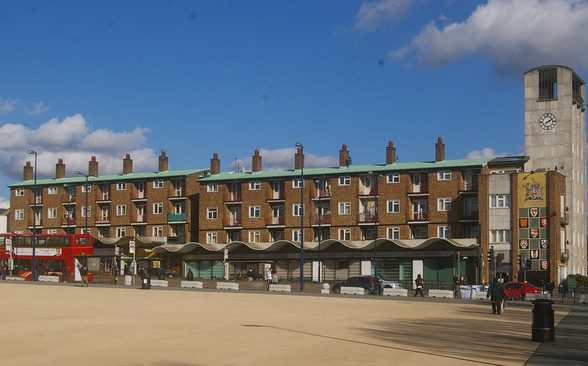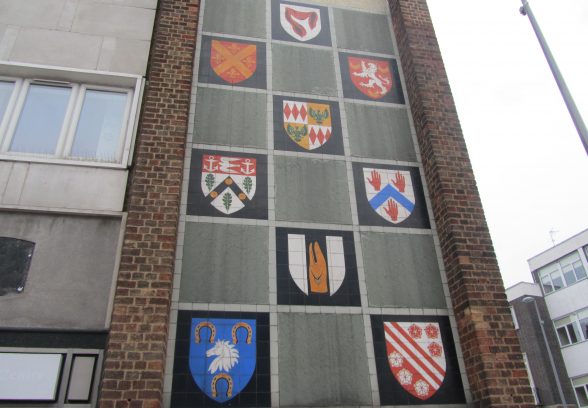This website uses cookies
This website uses cookies to enable it to function properly and to analyse how the website is used. Please click 'Close' to accept and continue using the website.




The Twentieth Century Society is celebrating today with news that the Chrisp Street Market Clock Tower and the neighbouring Festival Inn (Frederick Gibberd, 1951) have been listed as a result of our applications to Historic England. This follows on from the news last week that our separate application to list Central Parade in Walthamstow (F.G. Southgate, 1958) was also successful. All buildings are now protected at Grade II.
The Lansbury Estate in Tower Hamlets is widely regarded as one of the most important pieces of post-war townscape design in the country, and the Chrisp Street Market with its interlinked shopping parade and housing was a key part of this development. It may therefore come as a surprise that the clock tower and pub, two key market buildings were not already listed. It was constructed as part of the ‘Live Architecture’ exhibition of the 1951 Festival of Britain. The new Chrisp Street Market was the first pedestrianised shopping centre to be built in Britain, perhaps in Europe (although one had been planned for Coventry earlier, it was built later). It was the prototype for countless parades across the country of arcaded shops with flats or maisonettes above and pedestrianised area in front.
One of the two pubs on the estate, the Festival Inn marks the western extent of the row of shops in Grundy Street and is of London stock brick, faced in quartzite tiles at ground floor. The clock tower sits at the south-east corner of the market square and is the most readily identifiable feature of the Lansbury Estate. The tower incorporates two interlocking ‘scissor’ stairs (one for ascending, one for descending), which start parallel to each other but then go in opposite directions, so that they meet again only at the top. Between the top of the stairs and the clock above, Gibberd inserted a platform that gives views across the estate. The whole estate is already a designated conservation area, but listing provides further and welcome protection in an area that is currently seeing large-scale redevelopment. Unfortunately, our application to list the shopping parade was unsuccessful.
Central Parade in Walthamstow was designed by the borough architect F.G. Southgate in 1958-64 and is an early example of a mixed use development containing flats, shops, a bank, a lecture hall and a clock tower which crowns the street corner. Its ornamental flair is very much in the ethos of the Festival of Britain – bedecked with a wavy canopy, colourful mosaics and ceramic tiling, it is exuberant with post-war optimism and epitomises the light and informal style that was so often disparaged by architects of the period. Central Parade is a rare and largely intact example of quality civic architecture from this early post-war era that is rapidly being lost. The Society submitted Central Parade in 2016 following news that Walthamstow Council were considering regenerating the town centre. The listing means that the special interest of the building must be taken into consideration in the formation of any future plans.

Become a C20 member today and help save our modern design heritage.